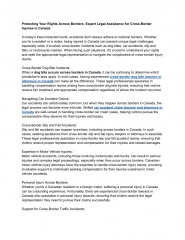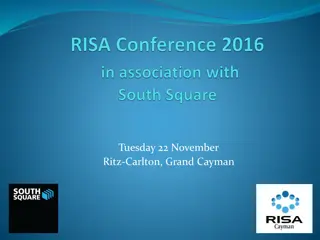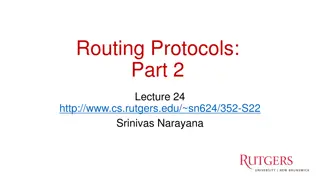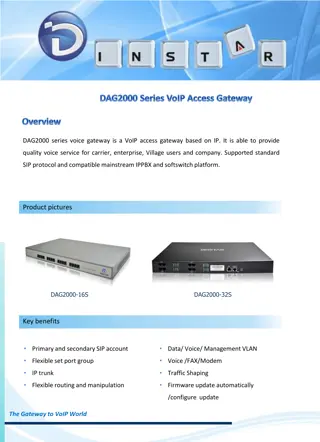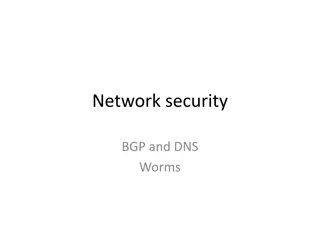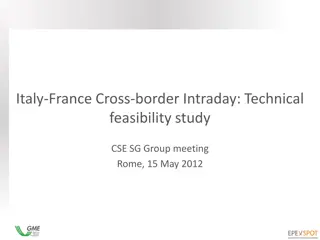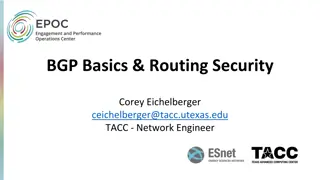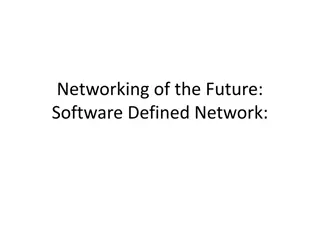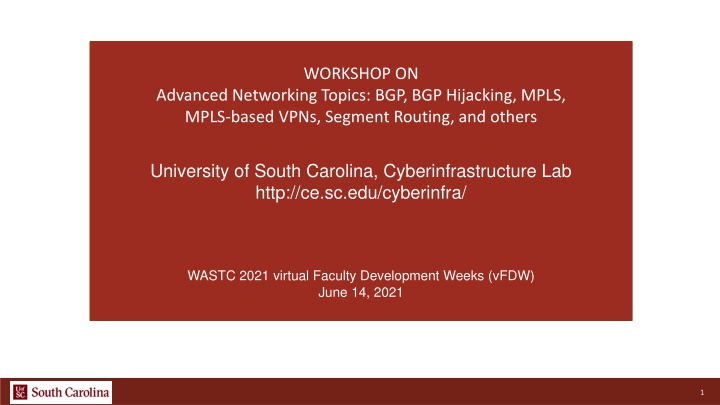
Advanced Networking Workshop at University of South Carolina Cyberinfrastructure Lab
Explore advanced networking topics such as BGP, BGP Hijacking, MPLS, MPLS-based VPNs, Segment Routing, and more at the workshop hosted by USC Cyberinfrastructure Lab. Discover hands-on education promotion and virtual labs facilitating high-performance system emulation for practical learning experiences. Enhance your networking skills with USC Lab Libraries' hands-on experiments and step-by-step guides. Join the workshop to delve into practical networking applications and gain valuable insights into networking technologies.
Download Presentation

Please find below an Image/Link to download the presentation.
The content on the website is provided AS IS for your information and personal use only. It may not be sold, licensed, or shared on other websites without obtaining consent from the author. If you encounter any issues during the download, it is possible that the publisher has removed the file from their server.
You are allowed to download the files provided on this website for personal or commercial use, subject to the condition that they are used lawfully. All files are the property of their respective owners.
The content on the website is provided AS IS for your information and personal use only. It may not be sold, licensed, or shared on other websites without obtaining consent from the author.
E N D
Presentation Transcript
WORKSHOP ON Advanced Networking Topics: BGP, BGP Hijacking, MPLS, MPLS-based VPNs, Segment Routing, and others University of South Carolina, Cyberinfrastructure Lab http://ce.sc.edu/cyberinfra/ WASTC 2021 virtual Faculty Development Weeks (vFDW) June 14, 2021 1
USC CI Lab Members 3
Agenda The agenda and other material can be found in the workshop s website: http://ce.sc.edu/cyberinfra/workshop_2021_wast.html 4
USC Promoting Hands-on The IEEE and ACM are the main societies which guide IT education According to them, the IT curriculum should emphasize learning IT core concepts combined with authentic practice and use of professional tools and platforms The University of South Carolina (USC) Cyberinfrastructure Lab (CI) promotes hands-on education, training, and research URL: http://ce.sc.edu/cyberinfra/ 5
Virtual Labs USC (www.netdevgroup.com) NDG provides a scalable platform the labs can run on USC s lab libraries incorporate performance and realism along with NETLAB s features works closely with the Network Development Group (NDG) Feature Description Virtual labs emulate high-performance systems (e.g., high-speed networks running at 40 Gbps) Performance Functional realism Virtual labs have the same functionality as real IT hardware in a real deployment, and execute the same code Devices within the virtual lab environment are capable of generating and receiving real, interactive network traffic to and from the Internet Traffic realism Navigating through an experiment is easy for an inexperience learner Presentation layer It must be easy to create an experiment with any topology, including inter-connecting heterogeneous virtual machines (VMs) Topology flexibility 6
USC Lab Libraries The learning-by-doing approach is essential in networking; textbooks and lectures are not sufficient Insight and appreciation of how technologies operate in practice can only be achieved via first-hand experience, hands-on experiments Laboratory experience allows learners to see networking in action, to understand each component, and to appreciate details All laboratory experiments include a background reading section before undertaking the experiments Then, experiments are described step-by-step 7
USC Lab Libraries List of USC s lab libraries can be found online: http://ce.sc.edu/cyberinfra/cybertraining.html Network Tools and Protocols SDN Introduction to BGP MPLS and Advanced BGP Topics Open vSwitch Introduction to perfSONAR Zeek/Bro Intrusion Detection System 8
Border Gateway Protocol (BGP) BGP is one of the most important protocols Consider the observations raised during the 2019 s Internet2 Technology Exchange Conference1 Breakdowns in BGP policy are splashed across the headlines on a now weekly basis... High profile incidents like the June 2019 Cloudflare event highlight how hard it is to manage the distributed and interconnected networks of the world, and how easy it is for a mistake to impact large populations Consider ZDNet article2 CenturyLink outage led to a 3.5% drop in global web traffic US internet service provider CenturyLink has suffered a major technical outage on Sunday after a misconfiguration in one of its data centers created havoc all over the internet Due to the technical nature of the outage -- involving both firewall and BGP routing 1. https://meetings.internet2.edu/2019-technology-exchange/detail/10005600/ 2. https://www.zdnet.com/article/centurylink-outage-led-to-a-3-5-drop-in-global-web-traffic/ 10
Border Gateway Protocol (BGP) How can routers direct packets over a set of independently run networks? BGP was invented to solve this problem and is now the glue that makes independently run networks appear as a coherent system to the end user Note that the glue here does not refer to the need of masking low-level compatibility of network technologies (IP); instead, it refers to the need of routing through independent networks BGP is a topic taught at different levels Professional certifications, two-year technical colleges, four-year universities, graduate school 11
Border Gateway Protocol (BGP) BGP is very complex Even after having read books and RFCs, students (instructors) may find it difficult to fully master BGP without having practiced it As critical protocol for the Internet, it is important to understand it 12
Routing Algorithms When a packet arrives to a router, the router looks up in its forwarding table to match the incoming packet and determine the corresponding action (e.g., forward the packet to port 1) Routing algorithm Routing algorithm Local Forwarding Table Local Forwarding Table Header value Output link 8.8.8.8 ... Header value Output link 8.8.4.4 ... ... ... 1 ... 3 ... J. Kurose, K. Ross, Computer networking, a top-down approach, 7th Edition, Pearson, 2017 14
Routing Algorithms Given a set of routers with connected links, routing algorithms determine a good path from a source to a destination Routing algorithm Routing algorithm Local Forwarding Table Local Forwarding Table Header value Output link 8.8.8.8 ... Header value Output link 8.8.4.4 ... ... ... 1 ... 3 ... J. Kurose, K. Ross, Computer networking, a top-down approach, 7th Edition, Pearson, 2017 15
Internetwork Routing Routers Systems (ASes or ASs) What is an AS (RFC 1771)? are organized into Autonomous Network 2 A set of routers under the single technical administration, using an IGP and common metrics to route packets within the AS, and using an EGP to route packets to other ASs. Network 1 Network 3 16
Internetwork Routing Routers Systems (ASes or ASs) What is an AS (RFC 1771)? are organized into Autonomous Network 2 A set of routers under the single technical administration, using an IGP and common metrics to route packets within the AS, and using an EGP to route packets to other ASs. Network 1 What is an Interior Gateway Protocol (IGP)? A routing protocol used to exchange routing information within an AS (e.g., RIP, OSPF) Network 3 17
Internetwork Routing Routers Systems (ASes or ASs) What is an AS (RFC 1771)? are organized into Autonomous Network 2 A set of routers under the single technical administration, using an IGP and common metrics to route packets within the AS, and using an EGP to route packets to other ASs. Network 1 What is an Interior Gateway Protocol (IGP)? A routing protocol used to exchange routing information within an AS (e.g., RIP, OSPF) What is an Exterior Gateway Protocol (EGP)? A routing protocol used to exchange routing information between AS Network 3 18
Internetwork Routing Routers Systems (ASes or ASs) What is an AS (RFC 1771)? are organized into Autonomous Network 2 RIP A set of routers under the single technical administration, using an IGP and common metrics to route packets within the AS, and using an EGP to route packets to other ASs. Network 1 OSPF BGP What is an Interior Gateway Protocol (IGP)? A routing protocol used to exchange routing information within an AS (e.g., RIP, OSPF) What is an Exterior Gateway Protocol (EGP)? A routing protocol used to exchange routing information between AS Network 3 Static BGP 19
Why BGP? An IGP moves packets as efficiently as possible from the source to the destination within an AS A IGP does not worry about politics, i.e., not many routing policies can be enforced in the network A corporate AS is not willing to carry traffic originating from a foreign AS, i.e., does not want to be a transit AS, however, telephone companies might be willing to carry traffic for their customers Carrying commercial traffic on the educational network Traffic starting or ending at Apple should not transit Google, etc. BGP is designed to handle all these cases and enforce routing policies between ASes A. Tanenbaum, and D. Wetherall, Computer Networks, Prentice-Hall international Edition, 2011 20
Routing Policies Transit Service A common routing policy is when a customer Internet Service Provider (ISP) pays another provider ISP to send and receive packets from and to any other destination in the Internet AS 1 Customer Customer Transit Transit AS 2 AS 3 A. Tanenbaum, and D. Wetherall, Computer Networks, Prentice-Hall international Edition, 2011 21
Routing Policies Peering If the ASes are already connected and they tend to exchange a lot of traffic, they can send traffic directly without having to pay for the transit service AS 1 AS 2 AS 3 Peering A. Tanenbaum, and D. Wetherall, Computer Networks, Prentice-Hall international Edition, 2011 22
BGP Route Advertisements between ASes In BGP route advertisements, each border router prepends its own AS number to the route before advertising the route to the next AS AS 100 AS 200 AS 300 AS 400 r1 r2 r3 r4 AS_PATH : {100} AS_PATH : {200,100} AS_PATH : {300,200,100} 23
BGP Route Advertisements within an AS Propagating BGP route advertisements from one AS to another is referred to as External BGP (EBGP) Propagating BGP route advertisements within an AS is referred to as internal BGP (IBGP) AS 100 AS 200 IBGP EBGP IBGP 24
Workshop and Lab Information Workshop website: http://ce.sc.edu/cyberinfra/workshop_2021_wast.html NETLAB URL: https://netlab.cec.sc.edu/ NETLAB Credentials: Username: email (example: jcrichigno@cec.sc.edu) Password: wastc2021 (lowercase) 26



